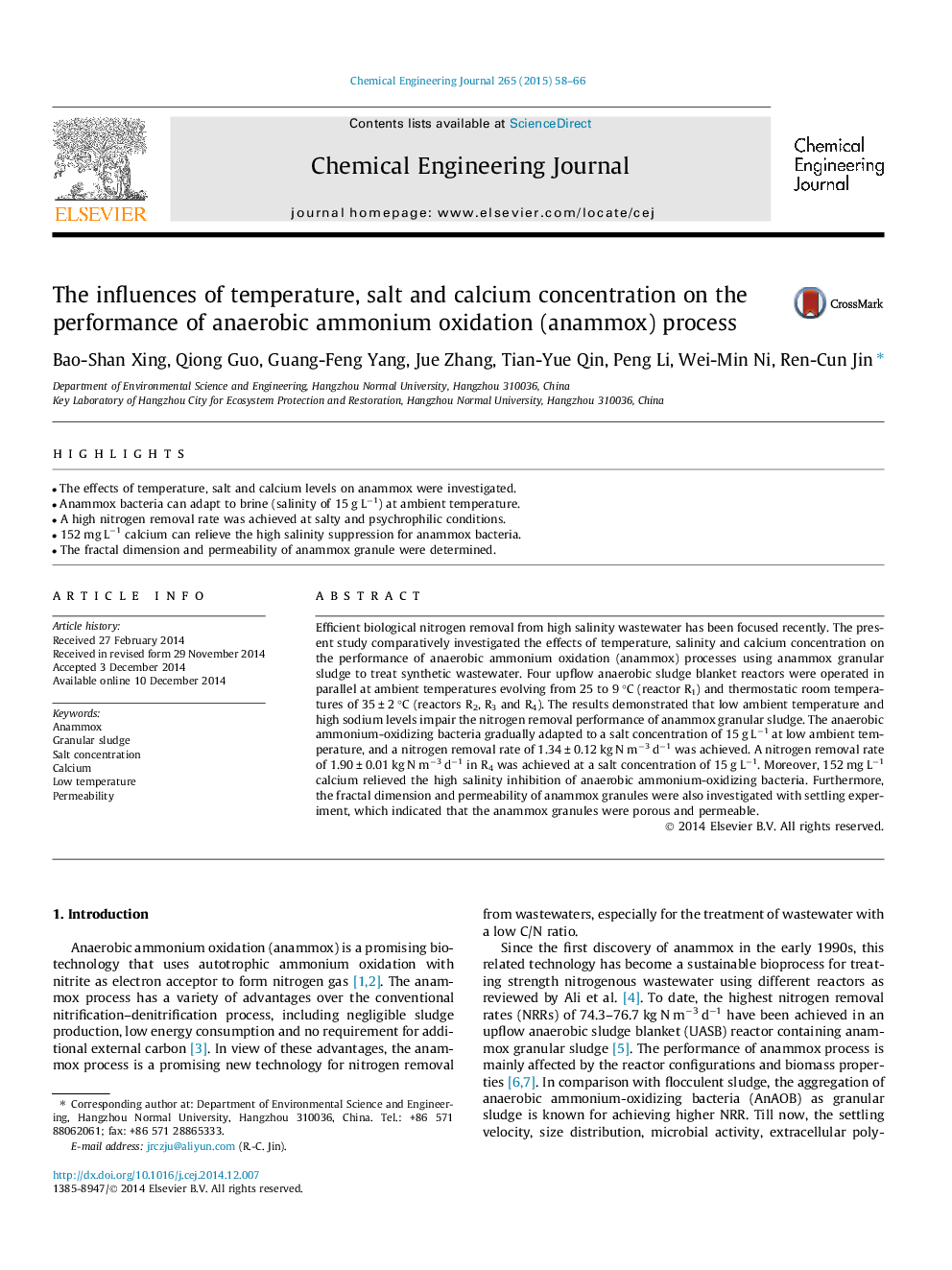| Article ID | Journal | Published Year | Pages | File Type |
|---|---|---|---|---|
| 146644 | Chemical Engineering Journal | 2015 | 9 Pages |
•The effects of temperature, salt and calcium levels on anammox were investigated.•Anammox bacteria can adapt to brine (salinity of 15 g L−1) at ambient temperature.•A high nitrogen removal rate was achieved at salty and psychrophilic conditions.•152 mg L−1 calcium can relieve the high salinity suppression for anammox bacteria.•The fractal dimension and permeability of anammox granule were determined.
Efficient biological nitrogen removal from high salinity wastewater has been focused recently. The present study comparatively investigated the effects of temperature, salinity and calcium concentration on the performance of anaerobic ammonium oxidation (anammox) processes using anammox granular sludge to treat synthetic wastewater. Four upflow anaerobic sludge blanket reactors were operated in parallel at ambient temperatures evolving from 25 to 9 °C (reactor R1) and thermostatic room temperatures of 35 ± 2 °C (reactors R2, R3 and R4). The results demonstrated that low ambient temperature and high sodium levels impair the nitrogen removal performance of anammox granular sludge. The anaerobic ammonium-oxidizing bacteria gradually adapted to a salt concentration of 15 g L−1 at low ambient temperature, and a nitrogen removal rate of 1.34 ± 0.12 kg N m−3 d−1 was achieved. A nitrogen removal rate of 1.90 ± 0.01 kg N m−3 d−1 in R4 was achieved at a salt concentration of 15 g L−1. Moreover, 152 mg L−1 calcium relieved the high salinity inhibition of anaerobic ammonium-oxidizing bacteria. Furthermore, the fractal dimension and permeability of anammox granules were also investigated with settling experiment, which indicated that the anammox granules were porous and permeable.
